Feminizing the Axe
Jess Hirsch, founder of Women's Woodshop in Minneapolis, calls for a reworking of craft practices and the gendering of tools.
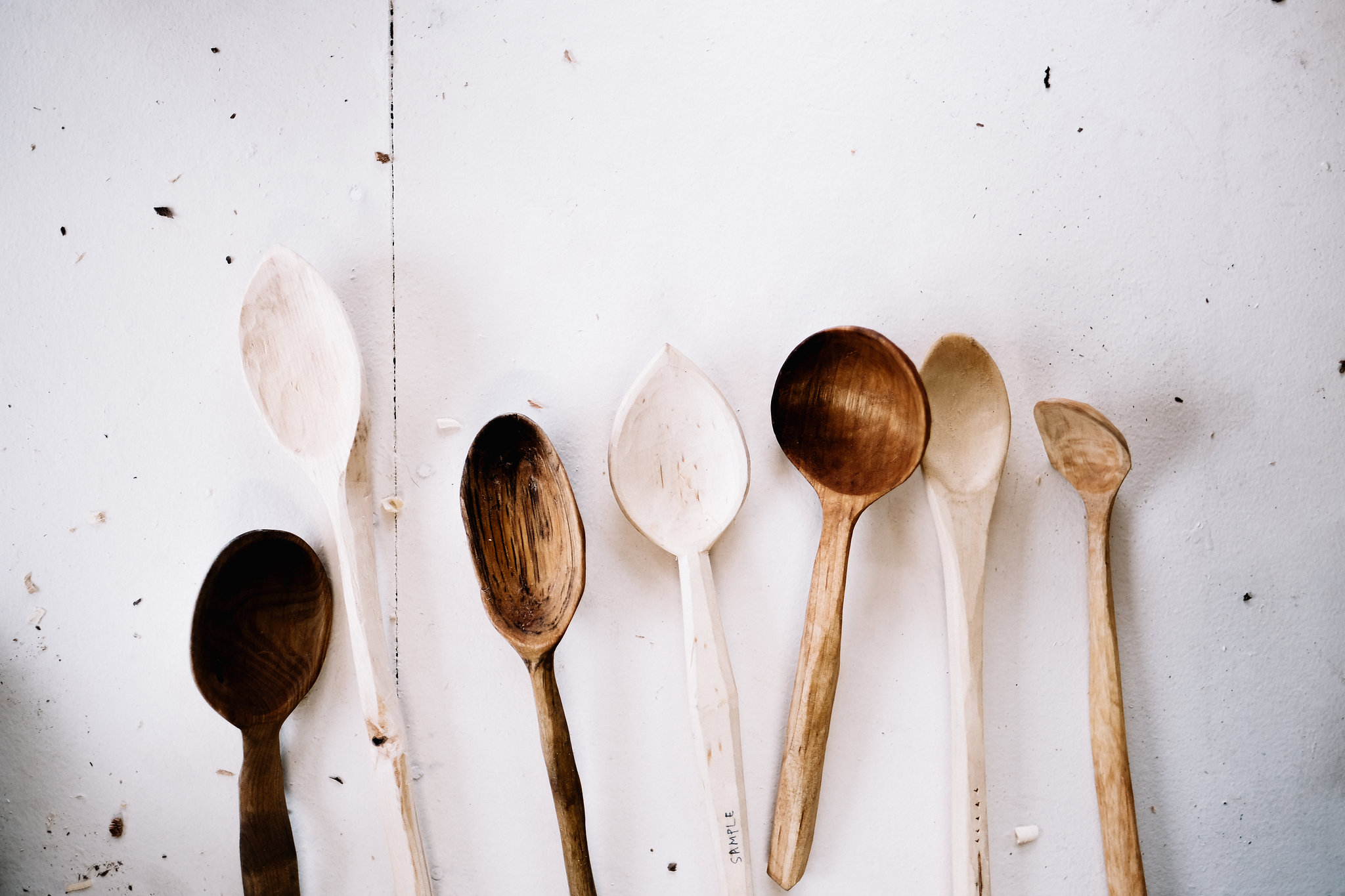
In Minnesota, it’s hard to imagine a more famous axe-person than the fictional lumberjack Paul Bunyan. As a kid, each summer my family would go to Paul Bunyan land in Brainerd, Minnesota. There, a larger-than-life sculpture would welcome you over a loud speaker by your first name, which the ticket person sneakily collected before you entered the building. As a little blonde girl, staring up at this big brute, I never related to him. That massive axe at his side would be the elusive illustration of masculinity, unattainable until I started spoon carving. The tale of Paul Bunyan might be the perfect argument for the axe’s masculine reputation. Paul was born as a 50-pound baby with a full beard. He could cut down 10 pines with a single axe blow. Known for his speed, skill, and strength, he was the ultimate lumberjack.
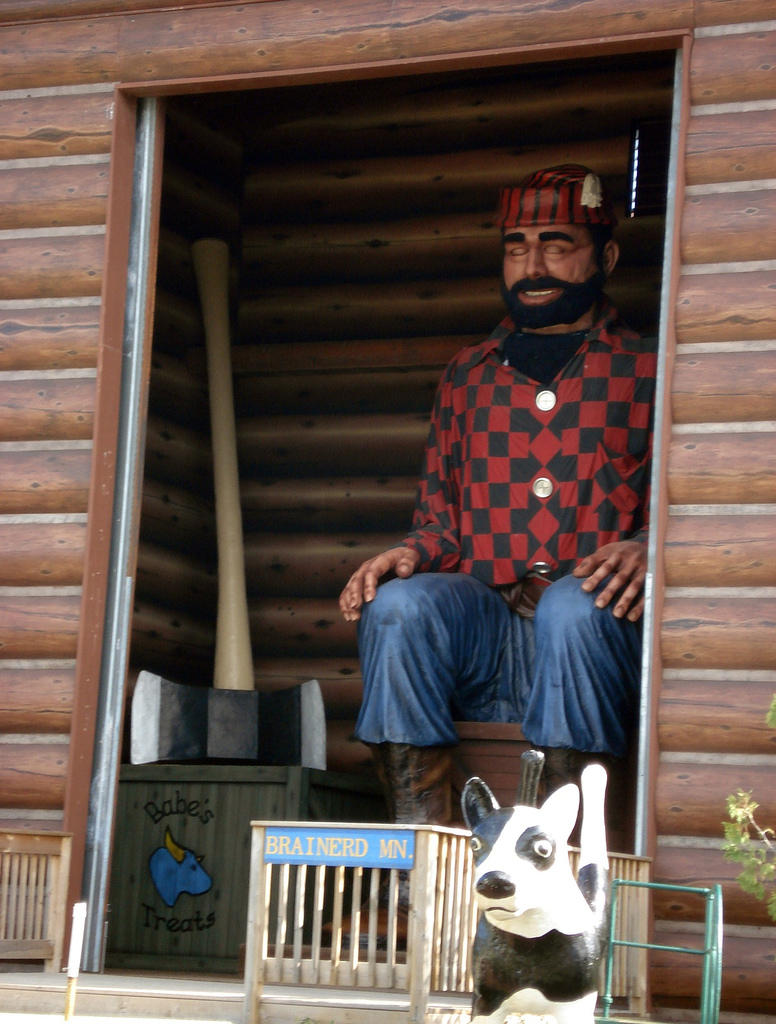
When I finally picked up an axe, I thought its sole purpose was for splitting wood. I had horrible aim and great fear that I would pop a kneecap through misuse. I avoided the weighty, hollow, beveled beast for many years. Chopping wood felt forbidden, not designed for my body. It was macho, brute in force, and I witnessed plenty of competitive testosterone flowing whenever wood needed to be split. Many of my female friends have told me about camping trips where their male partners insisted on chopping wood, taking the axe right out of their hands.
I recently watched “The Woodwright’s Shop” episode on The Spirit of Woodcraft. Roy Underhill recounted a woman’s story of splitting aspen to heat her cabin in the winter. She struggled to find a true split, until she allowed intuition to settle in. Seeing beyond the log as if it were transparent, she easily drove her axe through to meet the chopping block. She got out of her left brain, the side of analysis and logic, and into her body and spirit, an intuitive place where she was not imposing force on the wood, but rather communing with the tree.
“When I make a spoon, I read the tree, first and foremost. I let the shape of the tree dictate the form. My approach to woodworking relies on intuition and relinquishing control to the material. I have no plan in the beginning. I do not try to force straight lines on the bend of the tree. I listen to the grain as it twists, and try to structure my spoon to follow those curves. My approach to spoon carving with an axe takes a long time, because I do not rely on the blow of the axe to power through the wood. I avoid excess force.”
When I finally started using an axe for spoon carving, I was emboldened by my intuition, reading the tree in the flow of work, opposed to trying to force my way through the wood. Through the past four years of dancing with my Gransfor Bruks wildlife hatchet, I have been developing an argument to pull the axe away from the masculine and into the feminine. If you don’t believe tools are gendered in this way, look at the Latin origin of vagina, literally a sheath or scabbard for a sword, which identifies the tool as the male counterpart. Bummer. Times are advancing, and more women and gender non-conforming folks are forging their way into woodworking—so it feels appropriate to reassess axe work.
I was talking about gender in craft with April Stone, a highly skilled Black Ash Basket Weaver. In her tribe, The Bad River Band of Lake Superior Chippewa (Ojibwe), craft has been divided by gender between hard labor and soft labor. Typically, men would be assigned to do the physically demanding hard labor, including axe work, and women the soft labor, such as basket weaving. However, the tribe offers the choice to men, women, and two-spirit folk to pick their craft. Men can choose basket weaving, and women can hunt if they wish. Anatomy no longer dictates which craft path lies ahead.
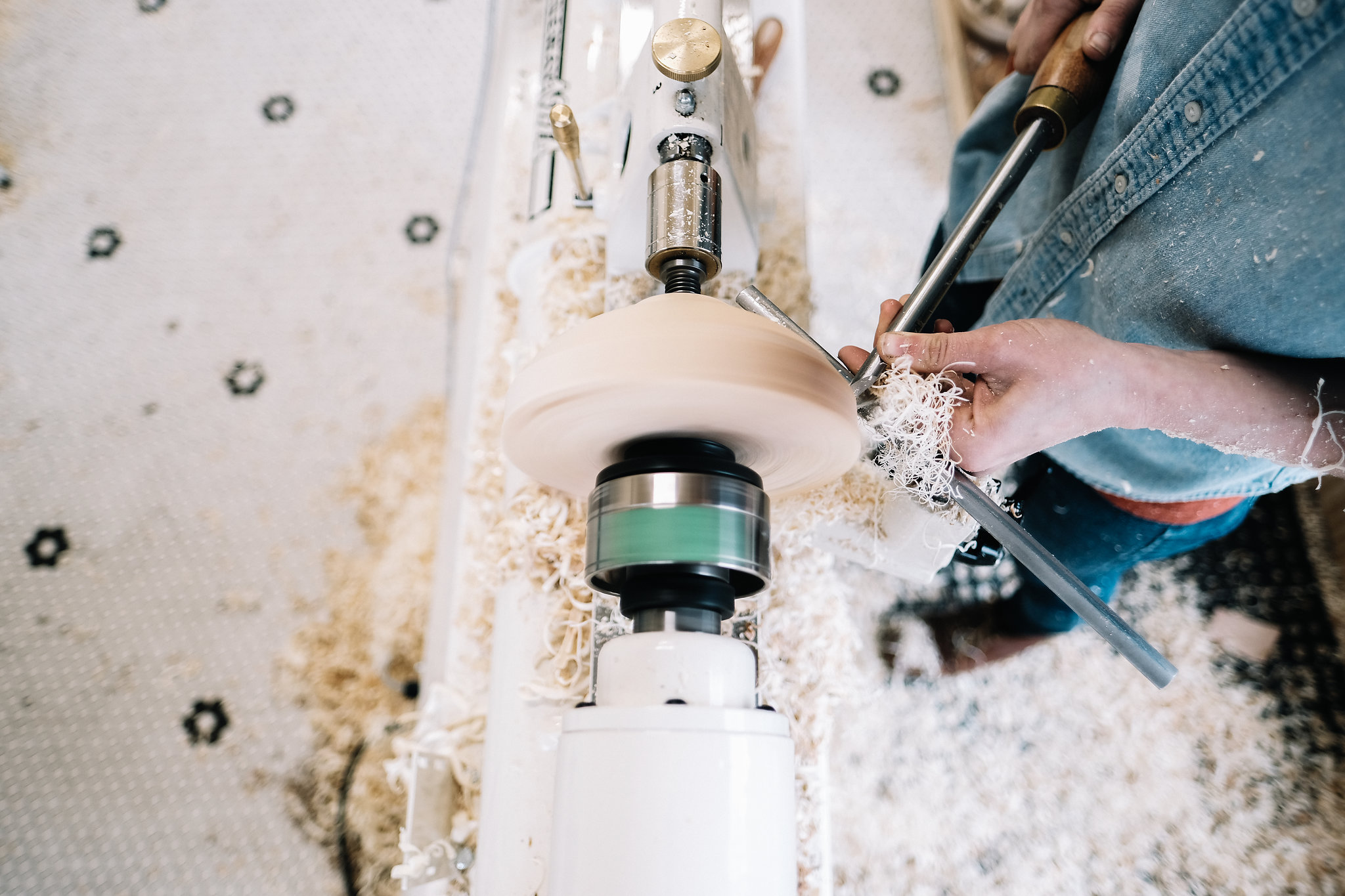
I have always been drawn to masculine activity. I joke that I am just a full-grown teenage boy, as I am learning how to skateboard in my thirties. The strange part of gendered activity is that I find myself adopting a masculine persona when entering these fields. I “bro down” about quality tools, get “gnarly” on the table saw, move trees by myself and rip them with my chainsaw. It’s not until working amongst women that I can talk about the romance of working with raw material from the land, how trees are used in herbal medicine, and how the process brings me to a state of mindfulness I only sometimes reach on my meditation cushion.
As I live in both worlds of woodworking and the community of women and gender non-conforming crafters, I have been uncovering a feminine approach to woodworking that has been overshadowed by male dominance in the field. Spoon carving and bowl turning have been the most exemplary, as forms can be more organic and designed intuitively. The very shape of the bowl can reference the body. In Tami Kent’s book, Wild Feminine: Finding Power, Spirit & Joy in the Female Body, she argues that the female body is like a bowl, where the pelvic bones contain the womb and the ability for creation (no big deal.) She points out “For centuries, women have been the bowl- and basket-makers, weaving containers that held food or water just as their bodies held the energy of the children and home.”
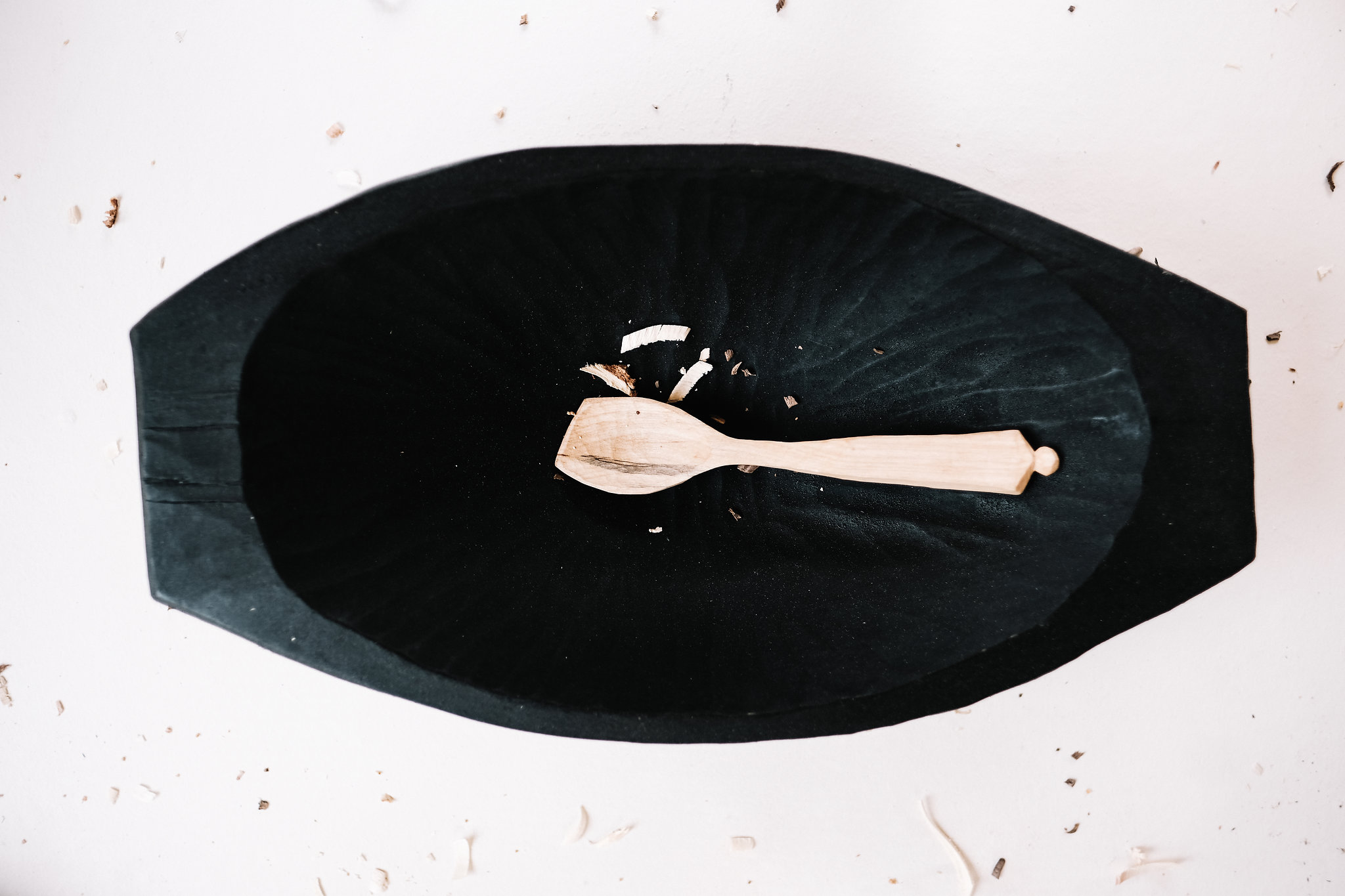
When I make a spoon, I read the tree, first and foremost. I let the shape of the tree dictate the form. My approach to woodworking relies on intuition and relinquishing control to the material. I have no plan in the beginning. I do not try to force straight lines on the bend of the tree. I listen to the grain as it twists, and try to structure my spoon to follow those curves. My approach to spoon carving with an axe takes a long time, because I do not rely on the blow of the axe to power through the wood. I avoid excess force. My favorite technique is to place the axe where I want the cut to occur, and then bounce the wood and axe together. I often describe this as the wood and axe being married. The sharp edge stays connected with the wood throughout the process, until the axe follows the grain, and runs out when the grain runs out. It listens to the wood grain and maintains the strength of the tree by following the grain. When I remove wood to make the handle of the spoon, I am attentive to the split. If the axe is driven too forcefully, the spoon can end up with hairline fractures through the bowl of the spoon. It’s important to slow down and read where the split is going to finish before the spoon is damaged. It’s rare that I swing my axe, only when tackling end grain, which is the strongest part of the tree. But even then, each swing is gentle. The more I approach axe work with a feminine lens, the stronger my spoons are. They have greater strength by listening to the grain, opposed to overpowering the wood.
This method of spoon carving with an axe is just a small example of what I mean by feminine woodworking. I founded Women’s Woodshop on the day of D.T.’s inauguration in 2016 as a personal protest. In this space, I have been able to explore a feminine approach to woodworking on a daily basis. What I have found is that among women and gender non-conforming folk, the woodshop is a space for support and community, and woodworking is a way to connect with the landscape. In this space, my students are more comfortable to ask questions, take risks, and support one another. In Power Tools 101, students work in pairs and help each other tackle problems. In spoon carving, we place all of our spoons in a circle at the end, and compare the forms without competition. There is no expectation of tool knowledge, nor lack of tool knowledge. Men repeatedly expect me to have no experience. Women and GNC makers are given the space to figure things out, and are not bombarded with excess information (in the form of mansplaining). The overall environment of a feminine woodshop is very different than the intimidation of a male dominated space, where I have experienced everything from having tools taken from my hands, arguments over what tools I need, and being watched like an animal at the zoo to see if I actually know what I am doing. Women’s Woodshop has become a supportive space for those that want to learn without experiencing the hierarchical gender dynamics of co-ed shops—and that includes many dudes who take classes and don’t feel comfortable in the pissing competition of masculine woodworking.
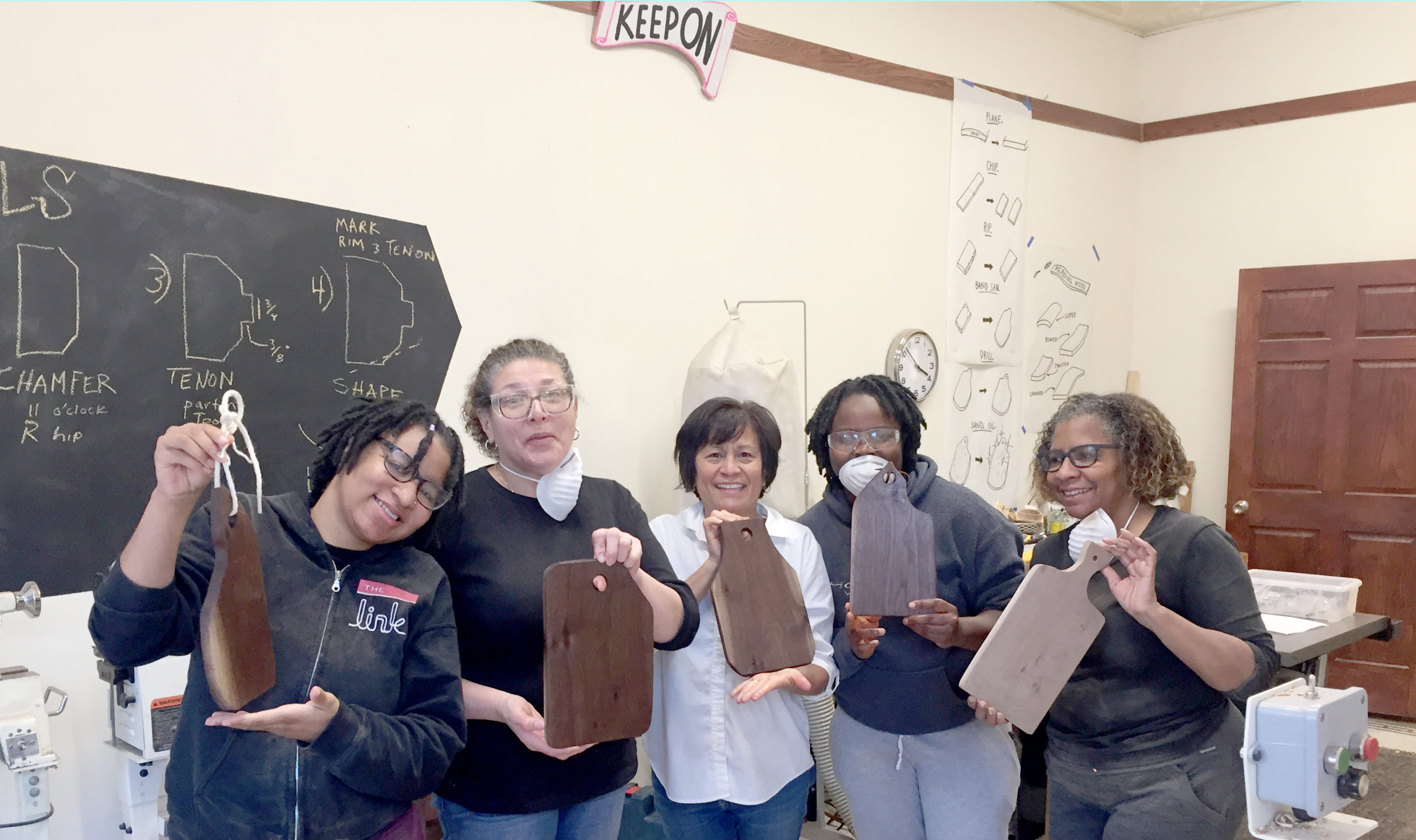
I want to acknowledge gendering a space during a major cultural shift in how gender is conceptualized. When I settled on the name “Women’s Woodshop”, I wanted a very clear, simple distinction of a different type of woodshop. It immediately came to light how gendering the space could be read as an unwelcoming space for the non-binary community, which is the last thing I wanted to portray. As I am approaching my first year of Women’s Woodshop, I have grown to see women’s woodworking as a style of woodworking, rather than a demographic of people working together. Women’s woodworking can be done by all genders. I often look to the Shakers for inspiration, and see that their approach to woodworking is as exciting as their design. The Shaker sect of Quakers was founded by Mother Ann Lee in the 18th century. Her adages included, “Put your hands to work and your hearts to god,” and “Do your work as though you have a thousand years to live, and as if you were to die tomorrow.” This is more than dovetails and pegs, but a mentality of craftspersonship to be adopted by the modern-day maker. I think of Women’s Woodshop as an approach to woodworking that lies in the feminine. Many of my male mentors and friends are making spoons and objects with this mentality. The Shakers are a celibate community, so the sect is disappearing, but the Shaker style of woodworking will continue on, and no one is expected to adopt the religion in order to adopt the approach. At Women’s Woodshop, we have classes for women and GNC folks only, but also host co-ed classes and open shop hours for men, women and non-binary folks to share space and practice woodworking in a feminine space.
So let’s feminize the axe. Use it as a tool to dance with wood, and do it with the approach of communing with nature, having a supportive community, and finding an intuitive space where the mind can let go of logic and plans, and celebrate gentleness.
This article was commissioned and developed as part of a series by guest editor Jordan Rosenow.